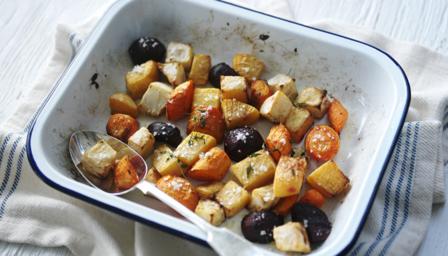Recently in class, we’ve been talking about how culture, class,
identity, and ethnicity all tie into together with food. Two classes ago we
talked about the Chinese food culture and last class we discussed the Italian
and Indian food cultures. As an Italian, I can attest to the importance of food
for community-cultural and self-identification reasons. I speak to this in my
Cultural Autobiography speech I had to give in my public speaking course:
"As I walk down aisle six of the supermarket, I speed right past the
pre-made pasta sauces. Buying Ragu or Bertolli or Classico or any other
store-made sauce is a sin in the Panepinto family. We know better than to even
look at those jars because, let’s face it, Ragu could never replace Grandma
Rose’s recipe. Grandma Rose’s recipe is sacred. It’s sailed across the oceans, been
passed down seven generations, and has served as Sunday dinner for hundred of
friends and family. It’s always been made from scratch, (hand gesture) “made
straight from the soul,” as Grandma Rose would say in her thick Italian accent.
“Every part of you is every part of sauce” (in Italian accent). Grandma Rose
believed that every ingredient, every little thing about the sauce embodied who
we were as Italians, who we were as Panepintos.
So with Grandma Rose’s recipe in hand, I walk up and down the aisles
looking for ingredients. First stop, tomatoes. Just as they are the base of the
sauce, tomatoes are the base of any Panepinto. They are grown from the ground and
have strong roots. (Point finger).“Remember where you come from,” my Nana would
say whenever I strayed too far from home. If I missed family dinner, I heard
about it. If I didn’t call my cousins on their birthday, I heard about it. And
if I ever talked about moving away from home, I heard about it. Home is where
family is and family is the most important thing in life. They will love you
and have your back no matter what—no matter how many windows, late night
curfews, or fingers in family football you broke, family will love you through
it all.
(Pause)
After I bag the tomatoes, I head over to the spices. The sauce needs a
little bit of kick, so I grab the mint. Mint is a stronger spice—somewhat zesty
and zingy just like a Panepinto. We are a quick-tempered kind, not afraid to
speak our minds and put up a fight. I can’t tell you the amount of cash-register
arguments, sporting-event squabbles, and fierce-family feuds we’ve gotten into.
Not because we’re cheap son-of-a-guns, but because we stand up for each other
and what we believe is right. It’s where I get my guts and grit. If a girl
intentionally slide-tackles one of my teammates, I’m the first one to put up a
fight. And if one of my teammates ever puts up a fight, I’m the first one by
her side. I’ll battle ‘til the end and when the fight is over, I’ll add a
little basil.
Basil is a sweet spice, another side to a Panepinto. We are kind,
loving, and good-hearted people. We will help the old lady with her bags at the
grocery store, cook stromboli for the new neighbors next door, and buy a friend
beer after a bad day. It’s nothing fancy, but we’re taught that it’s the simple
things in life. It’s what you do and how you make others feel that truly
matters. Make them feel good and you’ve done a good deed. Do a good few deeds
in your days and that’s a pretty good life.
(Pause)
The last ingredient I pick up is an onion because just like onions,
Panepintos have many layers. Thick skin is a must. Without it, you wouldn’t
survive a single family party. We are each others cruelest critics and most
ruthless ridiculers. You’ll get made fun of for the outfits you wear or the
boyfriends you bring around or the way you swing a bat. It’s all in good fun,
so eventually you have to learn to toughen up, laugh it off, and let it go.
When I get home, I empty the bag of ingredients and heat up the stove. But
before I do anything else, I turn on the radio…loud. That’s the Panepinto way.
Everything loud and rambunctious: the way we talk, laugh, move our hands. We’ve
been told to chill out and quiet down, but that doesn’t stop us from speaking up.
With a family so loud, you quickly find your own voice and become your own
person. Sooner rather than later, you figure out that it’s pretty cool to beat
to your own drum and make a little noise—or a lot of noise—while you’re at it.
(Pause)
Once I pull out the pan and put all the ingredients in it, I let it
simmer. I must mix and add water to it every so often because just like a
Panepinto we can sometimes become too intense. We can boil, and become fiery
and fierce, but that’s only because we are passionate about the things we do
and the people we love. We put our hearts into our work and play, into our joy
and every minute of every day.
(Pause)
When the clock ticks six, the dinner bell rings. People grab plates of penne
and shower it with Grandma Rose’s homemade sauce. We sit down at the table, and
before we eat, we say grace. We thank God for the food we are about to eat and
for all our blessings. Everyone says one thing they are grateful for. Mom says
our health, dad says our friends, Nana says our house, and I say…I always say
that I am blessed to be a Panepinto."






